Looking Up, 16-page English PDF Edition, Back Issues and Current Issue
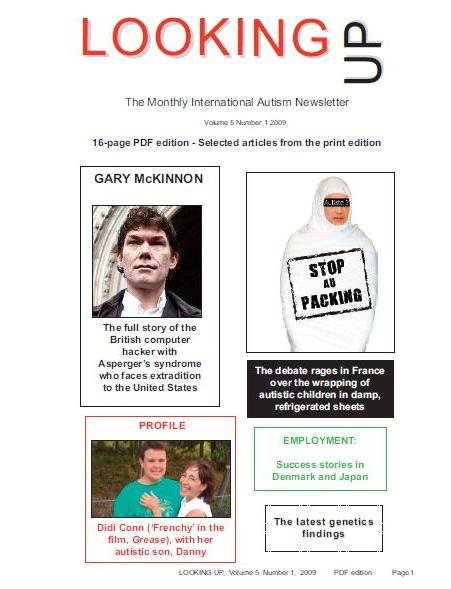
|
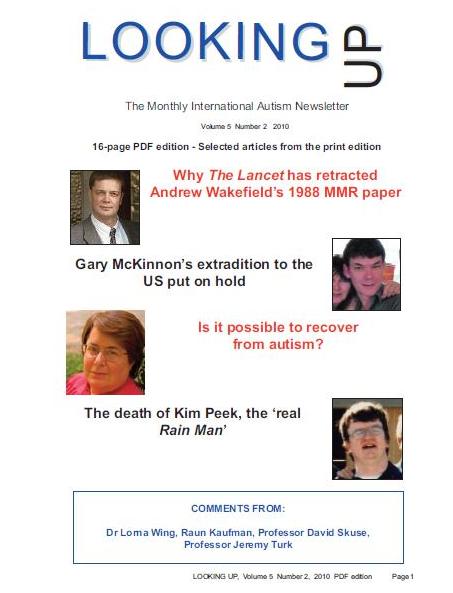
|
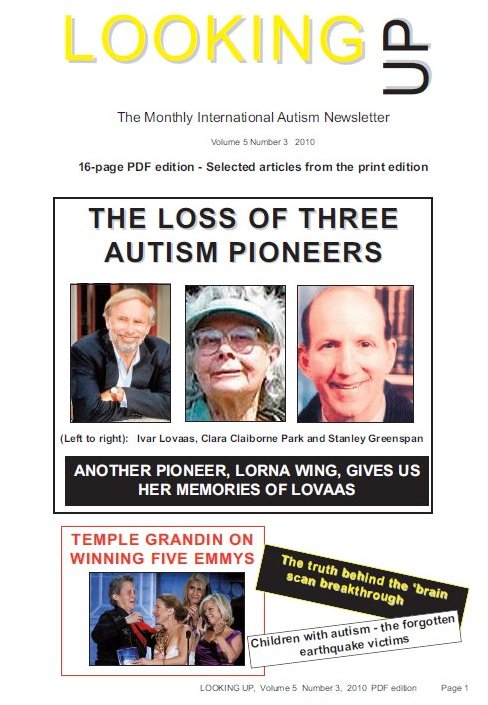
|
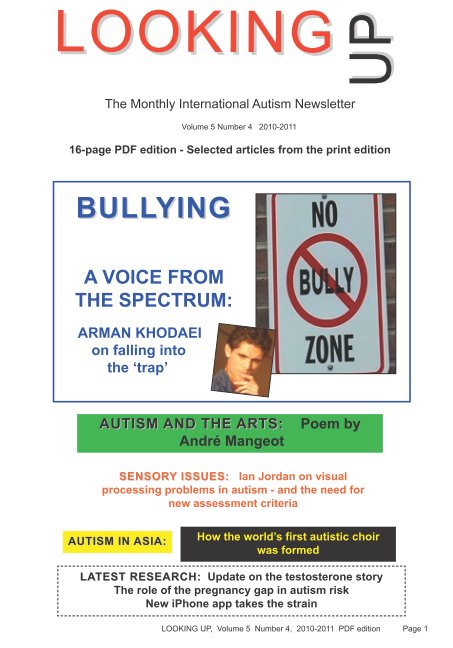
|
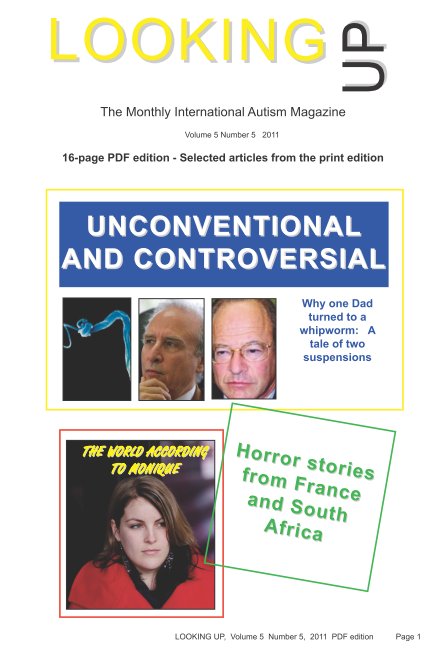
|
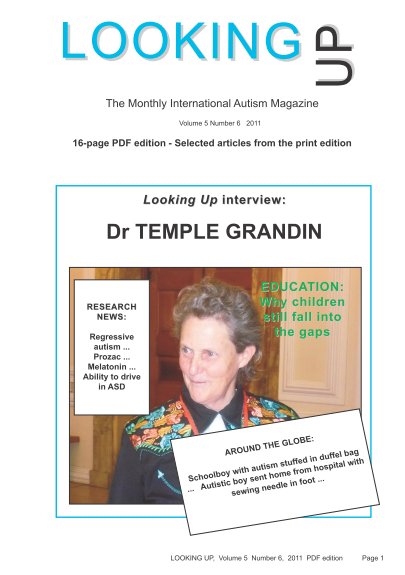
|
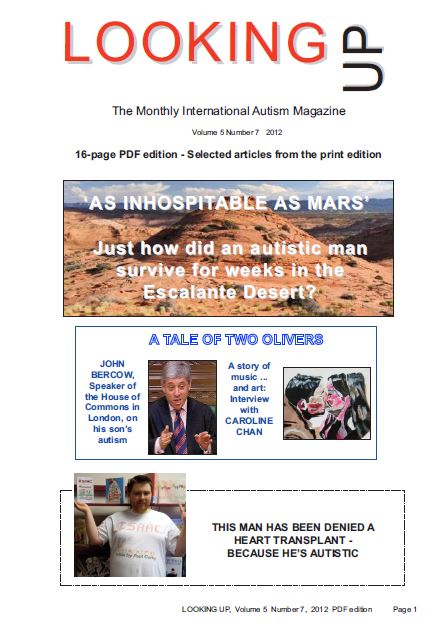
|
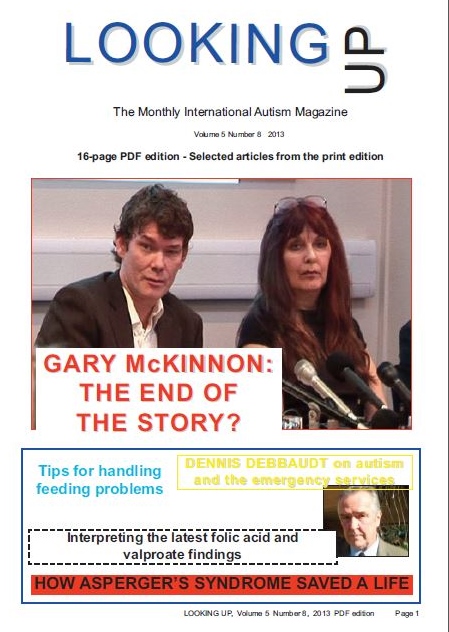
|
| Home page | Subscribe (print edition) | Selected articles | Our publications | Our mailing lists |
| PDF edition | Subscribe (PDF edition) | Back issue contents | Autism books | Contact us |
From Volume 3 Number 11
BOSTON, USA: Autistic children have abnormalities in their immune systems and unusual constellations of proteins in their blood that may be an indicator of the disorder, University of California, Davis, researchers said on May 5, 2005.
The findings "suggest the possibility for future diagnostic tests for autism at birth" and might mean that "we can get children into effective treatment much earlier than is now possible," said Dr Helen Tager-Flusberg, of the Boston University School of Medicine, who led the 4th International Meeting for Autism Research (IMFAR) in Boston, where the results were presented.
The findings suggest that researchers are beginning to tease out the biological and developmental causes of the disorder, which is now thought to affect as many as one in every 166 children. Autism has a broad spectrum of symptoms, but the disorder is marked by poor language skills, an inability to handle social relations and a lack of connection to the world.
Two groups of researchers from the MIND Institute at UC Davis reported that autistic children had a dysfunctional immune system, giving them an abnormal response to pathogens and other agents in the environment.
Dr David G. Amaral and his colleagues collected blood samples from 70 children, aged 2 to 4, who had autism and from 35 children without it. The samples were then studied for concentrations of immune cells, proteins and metabolites from protein processing.
"There were very striking differences at all three levels," Dr Amaral said. Children with autism had 20 per cent more of the white blood cells called B cells and 40 per cent more of the variety called natural killer cells.
Of 4,000 proteins examined, for instance, 500 occurred at different levels in the two groups. "None of the proteins absolutely diagnose autism," said Dr Amaral, but the group is confident that it can identify a panel of perhaps 100 that will be indicative of the disorder with a very high level of confidence.
Dr Amaral speculated that the immune abnormalities might be a marker of autism susceptibility which is present at birth, and development of the disorder could require exposure to an environmental trigger.
"If one could detect at birth those who are vulnerable and understand the trigger, it might be possible to prevent them from experiencing the trigger," he said.
He cautioned, however, that it was still uncertain whether the different levels of immune cells and proteins were a cause of the disorder or an effect. That would be determined only by examining levels in children before they showed clinical signs of autism, a study that was now beginning.
Similarly, Dr Judy Van de Water and her colleagues examined blood cells taken from autistic and healthy children, and studied their response to certain environmental agents, such as tetanus toxoid and preparation of the measles, mumps and rubella vaccine antigens.
Dr Van de Water told the meeting that white cells from the autistic children did not respond to the agents as strongly as those from healthy children, an indication of a dysfunctional immune system.
"But we still have a long road to say what role this immune dysfunction may play in autism," she added.
Rick Rollins, an autism research advocate who played a major role in founding the MIND Institute, called the results a "groundbreaking finding. Thousands of parents of children with autism ... have long held the belief that autism is an immune-mediated disease."
Other researchers at the conference reported they had identified a spectrum of behavioural characteristics that could be used to diagnose autism at an early stage. Many focused their studies on siblings of autistic children because they have a substantially increased risk of developing the disorder - as much as 50 times the risk of the general population.
Dr Wendy Roberts at the Hospital for Sick Children in Toronto and her colleagues studied 150 such siblings. She reported at the meeting that 19 had distinctive patterns of conduct as early as age 12 months. Among other symptoms, the children made little eye contact, even with parents, had trouble visually following an object, and had difficulty displaying emotions with their faces, such as by smiling. All 19 of the children subsequently developed autism, she said.
"A
critical mass of scientists and the new tools of molecular biology are
deepening our understanding of autism at a breathtaking pace," said Dr
Tager-Flusberg. "The immune system, behaviour, genetics, and the
environment
all factor in to this complex and devastating disease. We are putting
the
pieces together."
Among the other advances reported by scientists were:
Scientists reported their findings at the 4th International Meeting for Autism Research (IMFAR). The UC Davis M.I.N.D. Institute, Cure Autism Now, and the National Alliance for Autism Research initiated the annual conference, which is the most extensive exploration of research advances in autism.
Scientists reported progress in being able to diagnose the youngest children through both biomarkers and behavioural observations.
"Whereas today, most autistic children are not diagnosed until they are two to three years old, detection in infants would allow early treatment, which can profoundly benefit some children with autism," said Dr Amaral, research director at the UC Davis M.I.N.D. Institute. "And, ultimately, finding biological markers in infants may also yield the fastest route to a cure."
Dr Amaral reported on a comparison of blood samples from 70 autistic children and 35 same-age normally developing children revealed differences in proteins, metabolites and the immune system. These included elevated levels of immune system B cells and natural killer cells in the autistic group, and more than 100 proteins that the two groups expressed differently.
Researchers identified a variety of behaviours, some identifiable in the first year of life, that are predictive of autism.
Dr Lonnie Zwaigenbaum at McMaster University in Hamilton, Canada, reported that vocal differences at 12 months were predictive of autism in high-risk infants (those with older siblings who have autism).
Dr Sally Rogers of the UC Davis M.I.N.D. Institute and Dr Marian Sigman of UCLA found that, at 12 months, high-risk infants are less likely to respond to their own name than low-risk infants.
Other predictive behaviours in very young children included abnormalities in gesture, eye contact, body or limb posturing and atypical sounds and words. In addition, two studies showed that clinical diagnoses can be made reliably at 14 to 18 months of age. This is a major advance over current clinical practice, which diagnoses children between ages three and four.
Autism has a strong genetic component, and estimates are that five to 20 genes are likely to be involved in the condition. Some of these genes may be responsible for inherited traits that by themselves do not cause autism, but may be associated with it. These traits, called endophenotypes, can be behavioural or biological. Scientists are identifying such traits in the family members of autistic children.
"As we identify endophenotypes and their related genes, such as for language delay, we will be homing in on genes for autism," said Dr Daniel Geschwind of the University of California, Los Angeles, School of Medicine. "This is one of the most exciting developments in the field of autism genetics today."
Scientists at the conference reported on endophenotypic traits such as large head-size in family members, parents' abnormal brain processing of faces, and the degree to which relatives of autistic children can read another person's mental state.
One recent study by Dr Geschwind and colleagues validated the importance of endophenotypes in teasing out the genetics of autism. The study identified autism-related regions of the genome in children who are part of the AGRE consortium (the largest publicly available collection of autism families).

|

|

|

|

|

|

|

|
| Current 40-page print edition issue | |||||||||||||||
|---|---|---|---|---|---|---|---|---|---|---|---|---|---|---|---|
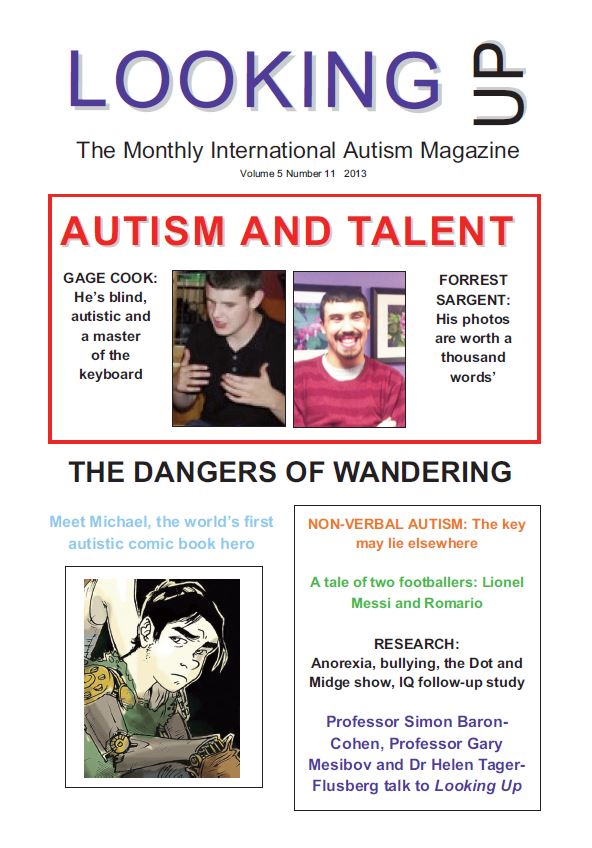
|
| ||||||||||||||
| PRINT EDITION BACK ISSUE CONTENTS AND FRONT COVERS | ||||||||||||||||||||||||||
|---|---|---|---|---|---|---|---|---|---|---|---|---|---|---|---|---|---|---|---|---|---|---|---|---|---|---|
| VOLUME 1, Number: | 1 | 2 | 3 | 4 | 5 | 6 | 7 | 8 | 9 | 10 | 11 | 12 | VOLUME 2, Number: | 1 | 2 | 3 | 4 | 5 | 6 | 7 | 8 | 9 | 10 | 11 | 12 | |
| VOLUME 3, Number: | 1 | 2 | 3 | 4 | 5 | 6 | 7 | 8 | 9 | 10 | 11 | 12 | VOLUME 4, Number: | 1 | 2 | 3 | 4 | 5 | 6 | 7 | 8 | 9 | 10 | 11 | 12 | |
| VOLUME 5, Number: | 1 | 2 | 3 | 4 | 5 | 6 | 7 | 8 | ||||||||||||||||||
| You can find our PDF EDITION CONTENTS AND COVERS on our PDF EDITION BACK ISSUES PAGE | ||||||||||||||||||||||||||
| Home page | Subscribe (print edition) | Selected articles | Our publications | Our mailing lists |
| PDF edition | Subscribe (PDF edition) | Back issue contents | Autism books | Contact us |